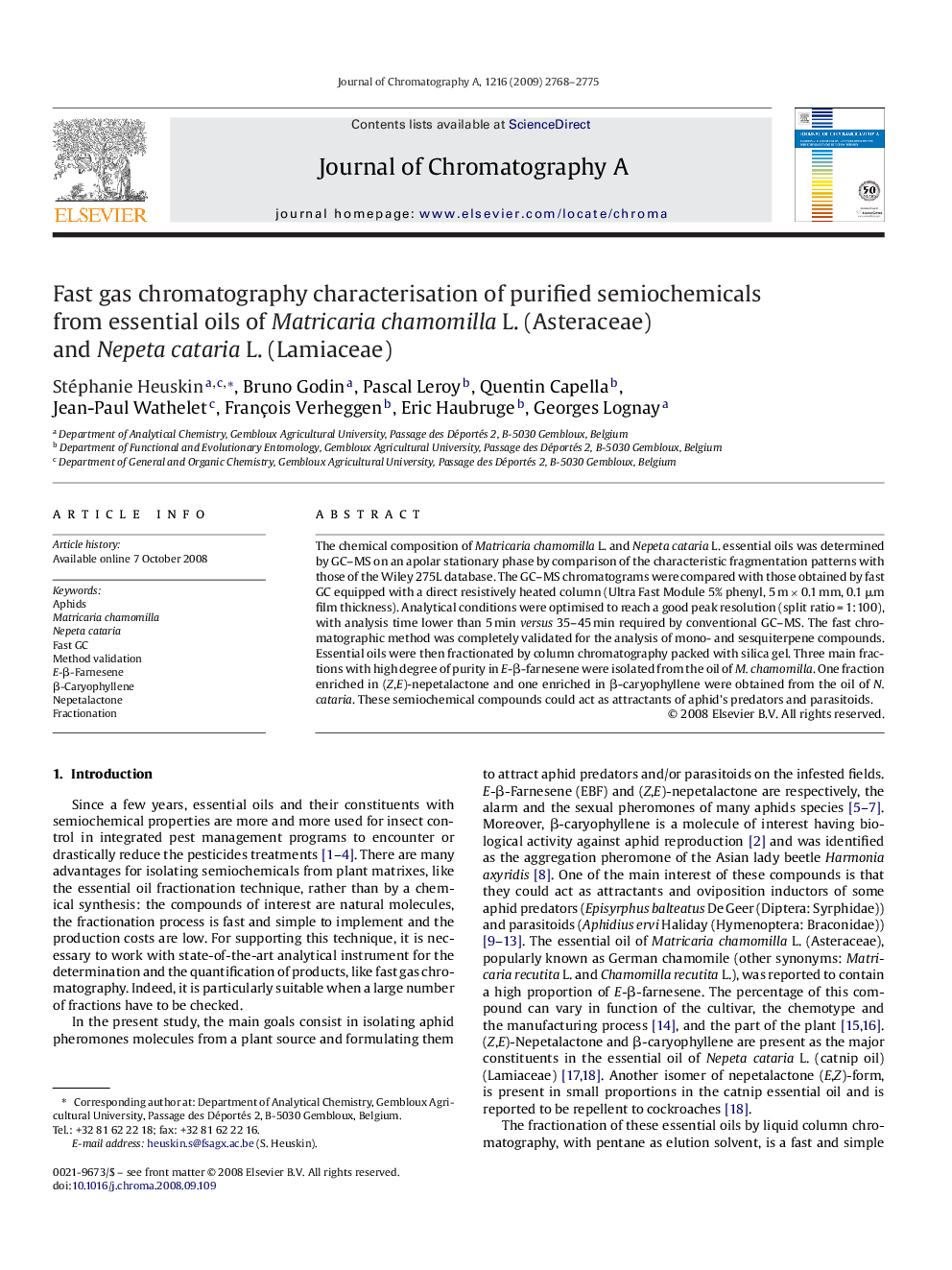| Article ID | Journal | Published Year | Pages | File Type |
|---|---|---|---|---|
| 1210700 | Journal of Chromatography A | 2009 | 8 Pages |
The chemical composition of Matricaria chamomilla L. and Nepeta cataria L. essential oils was determined by GC–MS on an apolar stationary phase by comparison of the characteristic fragmentation patterns with those of the Wiley 275L database. The GC–MS chromatograms were compared with those obtained by fast GC equipped with a direct resistively heated column (Ultra Fast Module 5% phenyl, 5 m × 0.1 mm, 0.1 μm film thickness). Analytical conditions were optimised to reach a good peak resolution (split ratio = 1:100), with analysis time lower than 5 min versus 35–45 min required by conventional GC–MS. The fast chromatographic method was completely validated for the analysis of mono- and sesquiterpene compounds. Essential oils were then fractionated by column chromatography packed with silica gel. Three main fractions with high degree of purity in E-β-farnesene were isolated from the oil of M. chamomilla. One fraction enriched in (Z,E)-nepetalactone and one enriched in β-caryophyllene were obtained from the oil of N. cataria. These semiochemical compounds could act as attractants of aphid’s predators and parasitoids.
